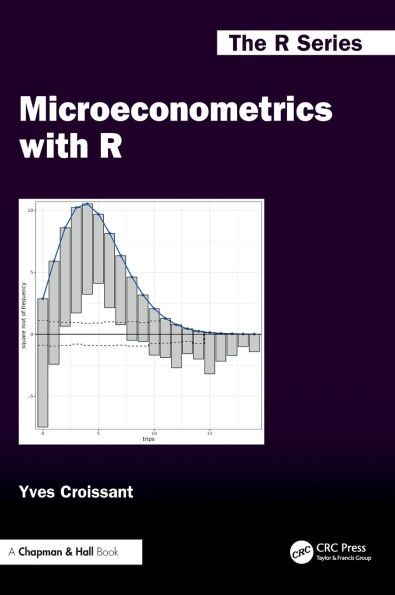R appeared in the late nineties as a clone of S. It became increasingly popular among statisticians, especially in fields where S was widely used. Twenty years ago, using R for doing econometrics analysis required a lot of programming because a lot of core methods of econometrics were not available in R. Nowadays, most of the basic methods described in the book are available in contributed packages. Moreover, the set of packages called the tidyverse developed by RStudio (now Posit) for all the basic tasks of an applied statistician (importing, tidying, transforming and visualizing data sets) makes the use of R faster and easier. The book uses extensively specialized econometrics packages and the tidyverse, and it seeks to demonstrate that the adoption of R as the primary software for an econometrician is a relevant choice.
The first part of the book is devoted to the ordinary least squares estimator. Matrix algebra is progressively introduced in this part, and special attention is paid to the interpretation of the estimated coefficients. The second part goes beyond the basic OLS estimator by testing the hypothesis on which this estimator is based and providing more complex estimators relevant when some of these hypotheses are violated. Finally, the third part of the book presents specific estimators devoted to "special" responses, e.g., count, binomial or duration data.
Key Features:
- Many applications using data sets of recent academic works are developed
- Testing and estimation procedures using the programming framework of R and specialized packages are presented
- Two companion packages (micsr and micsr.data), containing respectively functions implementing some estimation and testing procedures not available in other contributed packages and data sets used in the book, are provided
R appeared in the late nineties as a clone of S. It became increasingly popular among statisticians, especially in fields where S was widely used. Twenty years ago, using R for doing econometrics analysis required a lot of programming because a lot of core methods of econometrics were not available in R. Nowadays, most of the basic methods described in the book are available in contributed packages. Moreover, the set of packages called the tidyverse developed by RStudio (now Posit) for all the basic tasks of an applied statistician (importing, tidying, transforming and visualizing data sets) makes the use of R faster and easier. The book uses extensively specialized econometrics packages and the tidyverse, and it seeks to demonstrate that the adoption of R as the primary software for an econometrician is a relevant choice.
The first part of the book is devoted to the ordinary least squares estimator. Matrix algebra is progressively introduced in this part, and special attention is paid to the interpretation of the estimated coefficients. The second part goes beyond the basic OLS estimator by testing the hypothesis on which this estimator is based and providing more complex estimators relevant when some of these hypotheses are violated. Finally, the third part of the book presents specific estimators devoted to "special" responses, e.g., count, binomial or duration data.
Key Features:
- Many applications using data sets of recent academic works are developed
- Testing and estimation procedures using the programming framework of R and specialized packages are presented
- Two companion packages (micsr and micsr.data), containing respectively functions implementing some estimation and testing procedures not available in other contributed packages and data sets used in the book, are provided

Microeconometrics with R
516
Microeconometrics with R
516
Product Details
| ISBN-13: | 9780367554460 |
|---|---|
| Publisher: | CRC Press |
| Publication date: | 02/14/2025 |
| Series: | Chapman & Hall/CRC The R Series |
| Pages: | 516 |
| Product dimensions: | 7.00(w) x 10.00(h) x (d) |
